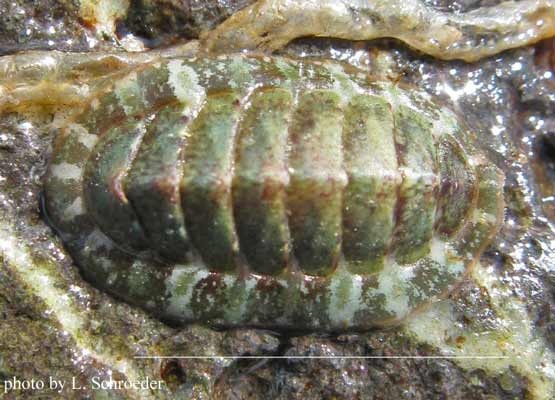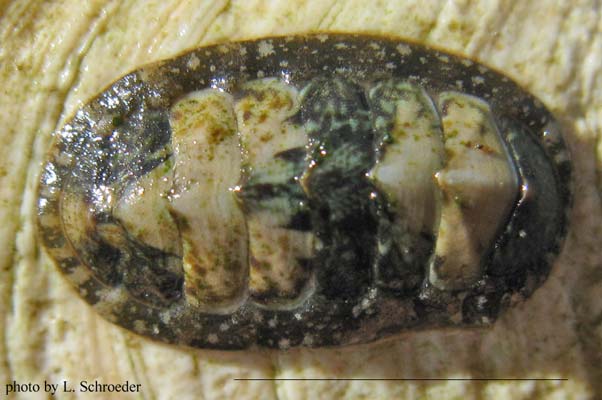Chitons (Polyplacophora)
Family Acanthochitonidae, Schizoplacidae
& Tonicellidae
Acanthochitonidae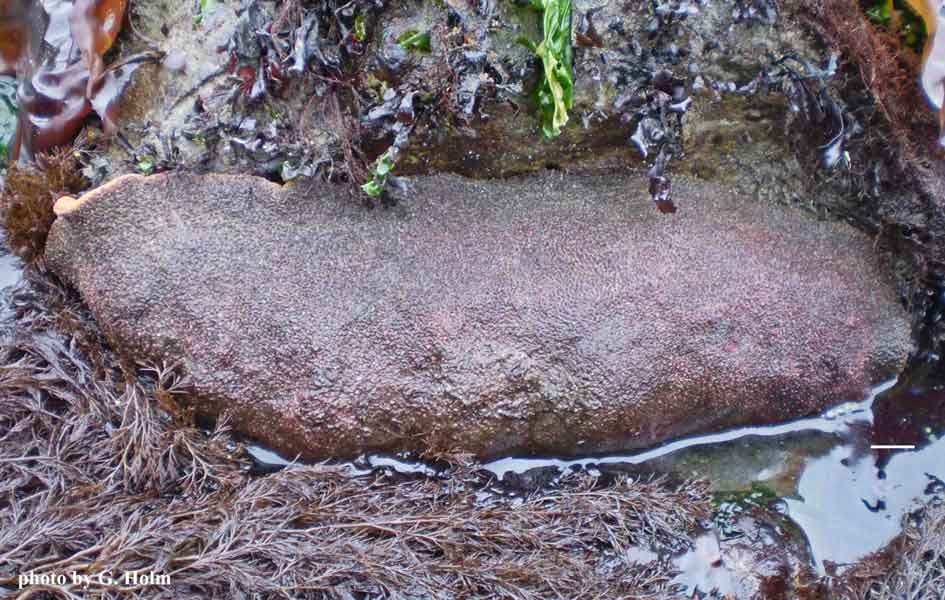
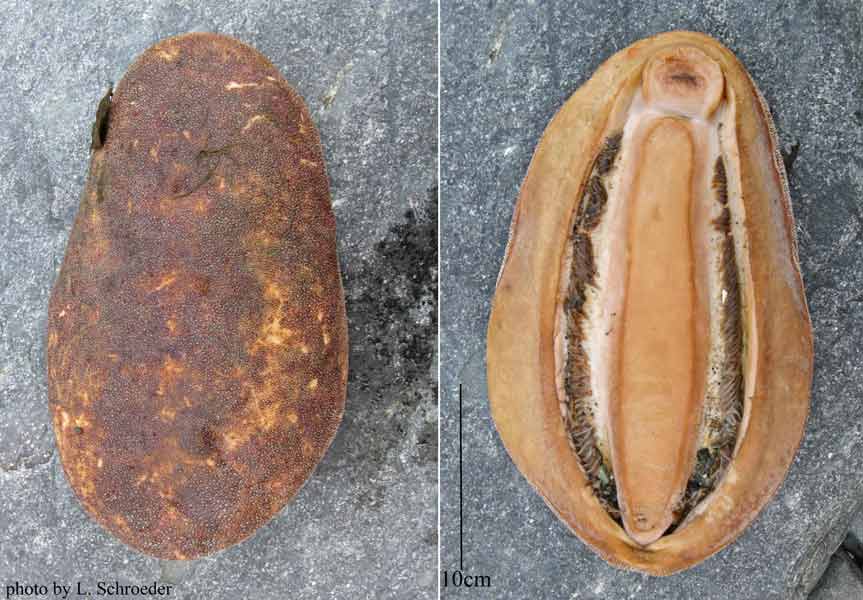

 Marrowstone
Island, WA, intertidal Dungeness Spit, WA, fresh
dead Freshwater Bay, WA, subtidal Anacortes, WA, intertidal
Marrowstone
Island, WA, intertidal Dungeness Spit, WA, fresh
dead Freshwater Bay, WA, subtidal Anacortes, WA, intertidal Click on photo to enlarge. Scale line in photo equals 1cm unless otherwise specified.
* Species which are commonly encountered on the beach.

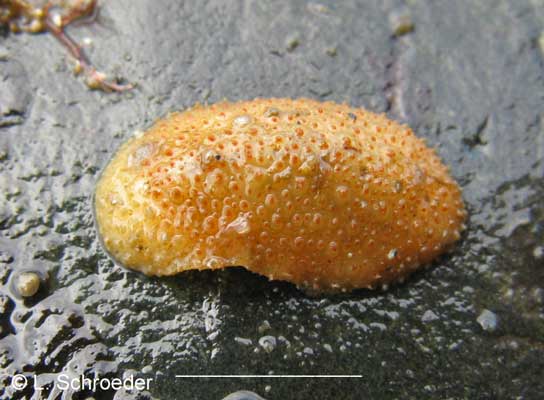 plates
Neptune Beach, WA, juvenile
plates
Neptune Beach, WA, juvenile
Cyanoplax dentiens (Gould, 1846)
Gould's Baby Chiton *
intertidal
to 6m northern Mexico to southern
Alaska size to 2.7cm
This is a common intertidal species although often hard to spot due to its small size. It is variable in color but is most commonly greenish-gray to brown. White flecks or blue-green dots are also typical.
(previous names - Lepidochitona dentiens, Ischnochiton dentiens)
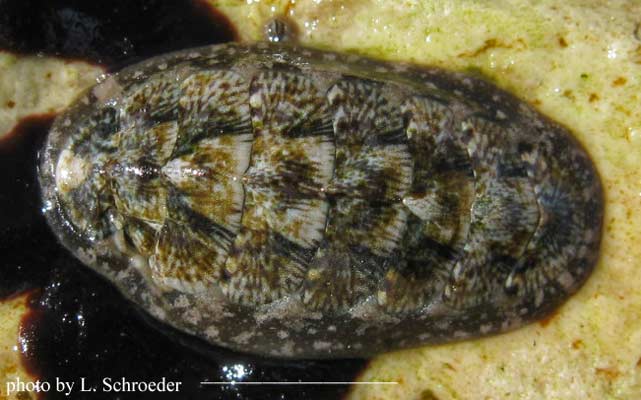 Anacortes, WA, intertidal
Anacortes, WA, intertidal
Cryptochiton stelleri (Middendorff, 1847)
Giant Pacific Chiton or Gumboot Chiton *
intertidal to 20m size to 35cm
southern California to northern Alaska; Japan
This is a fairly common intertidal species and is the largest chiton species in the world. The girdle completely covers the plates.
The disarticulated plates are often called "butterfly shells".
(previous name - Amicula stelleri)


photographed intertidally Tacoma, WA, intertidal
Cyanoplax fernaldi (Eernisse, 1986)
Fernald's Baby Chiton
mid to high intertidal southern Oregon to SE Alaska size to 15mm
This
species is hard to find due to its small size. Its preferred
habitat is among Thatched Barnacles and Aggregating Anemone, where it
is tucked into crevasses where it is not easily seen. This
species is easy to confuse with C. dentiens although it usually has more eroded plates. Our left photo shows a rare turquoise phase.
previous names - (Lepidochitona fernaldi)
This page last revised: 7-2-2024
Tonicellidae
Alaska, subtidal
Boreochiton beringensis (Yakovleva, 1952)
Northern Red Chiton
very low intertidal to at least 30ml size to 35mm
northern BC to Bering Sea
This species may have red, green or blue patches on its plates.
(previous name - Tonicella beringensis)
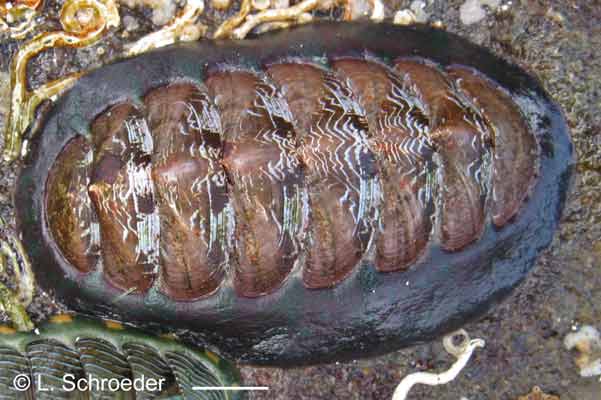
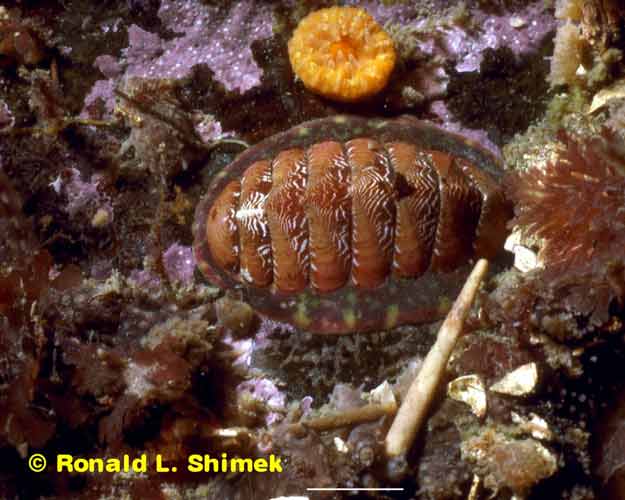

Tacoma, WA, intertidal
Turn Island, WA, subtidal Gabriola Is., BC, found subtidally
Tonicella insignis (Reeve, 1847)
White-Line Chiton
intertidal to 50m northern Oregon to northern Alaska size to 6cm
This
species is rarely found intertidally. It is reddish-brown with
lighter-toned wavy lines across the width of the plates. The
girdle is light reddish-brown.
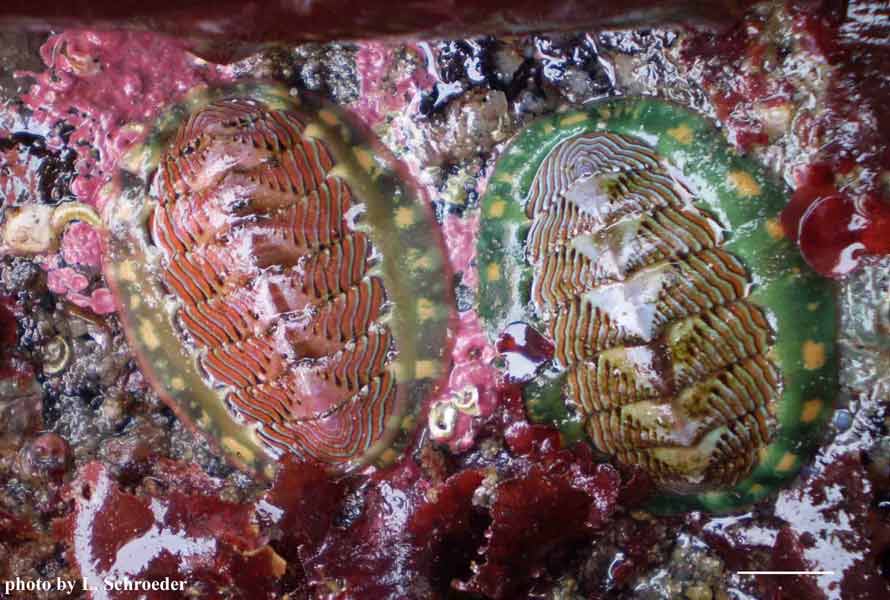


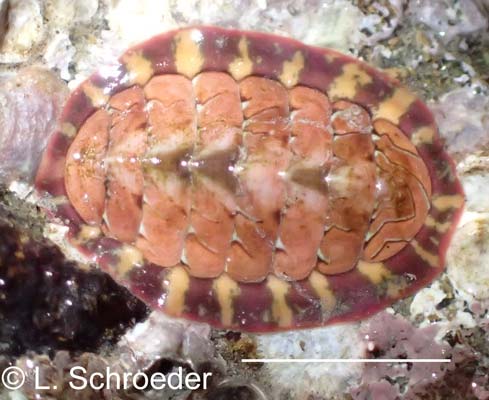 Marrowstone Is., WA, intertidal
Freshwater Bay, WA, subtidal Freshwater Bay, WA,
subtidal Point Whitehorn, WA, intertidal
Marrowstone Is., WA, intertidal
Freshwater Bay, WA, subtidal Freshwater Bay, WA,
subtidal Point Whitehorn, WA, intertidal
Tonicella lineata (Wood, 1815)
Lined Chiton *
intertidal to 90m southern California to northern Alaska, Japan & Siberia size to 5cm
This
is a very common intertidal species. The background color is
orangish but can range from pink-orange to brown-orange. Wavy
bluish-white lines run across the sides of the plates which are edged
in reddish-brown. The
lines along the head and tail plates may be wavy, and will also be
edged in reddish-brown. Some plates may be a solid color,
usually a
reddish tone but sometimes blue. The
girdle is banded and also may vary in its colors. Very young
specimens can be highly variable in the number of lines and colorations
as shown in photo above right.
 Anacortes, WA, intertidal
Anacortes, WA, intertidal
Tonicella rubra (Linnaeus, 1767)
Northern Red Chiton
intertidal to 145m size to 22mm
California to Arctic; in Atlantic - Connecticut and northern Europe to Arctic
This
is rarely found intertidally in the Pacific Northwest. The plates
are light tan with red to orange-red markings. The plates may
also be uniformly reddish. The girdle is covered in minute scales
which do not overlap.
(synonyms - Boreochiton ruber, Ischnochiton ruber)
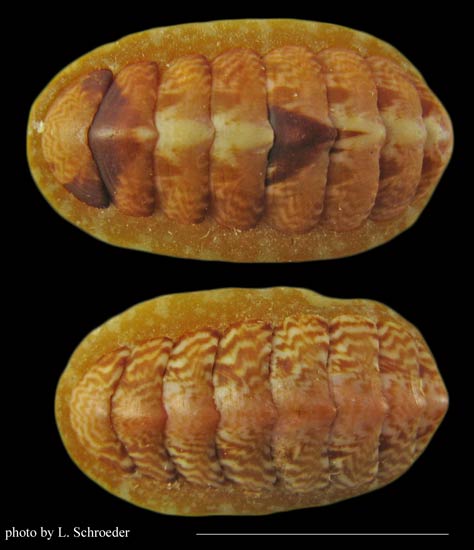 preserved specimens, Petersburg, AK
preserved specimens, Petersburg, AK
Freshwater Bay, WA, subtidal
Tongue Point, WA, subtidal
Tonicella cf. undocaerulea (Sirenko, 1973)
Blue-Line Chiton
intertidal
to 50m southern California to central
Alaska size to 5cm
This
is occasionally found intertidally. It has a light orangish-pink
background, and may occasionally be solid in color. Blue to white
wavy lines run along the sides of the plates. There may beoccasional
streaks of maroon edging some of the lines. The blue lines on the
head and tail plates are distinctly zigzagged and are not edged in
maroon. The girdle is banded pink and yellow.
T. undocaerulea is now known to not be present in the eastern Pacific but our local species has yet to be named.
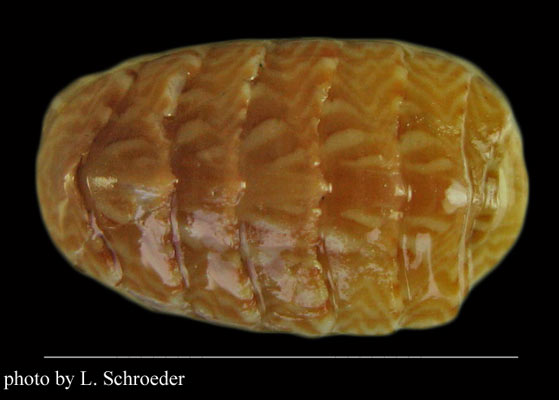 Neah Bay, WA, preserved specimenTonicella cf. venusta Clark, 1999intertidal
to 140m size to 1.7cmnorthern Mexico to southern
AlaskaThis
tiny species is rarely found intertidally. It has a light orange
or pink background with white zigzag lines. Light dash markings
along the center of the plates separate this species from the others.
The girdle appears sandy. (The ID on the photo is not confirmed but it conforms to all characteristics.)
Neah Bay, WA, preserved specimenTonicella cf. venusta Clark, 1999intertidal
to 140m size to 1.7cmnorthern Mexico to southern
AlaskaThis
tiny species is rarely found intertidally. It has a light orange
or pink background with white zigzag lines. Light dash markings
along the center of the plates separate this species from the others.
The girdle appears sandy. (The ID on the photo is not confirmed but it conforms to all characteristics.)
Schizoplacidae



preserved
specimens and color variations
all Port Hardy, BC, intertidal

